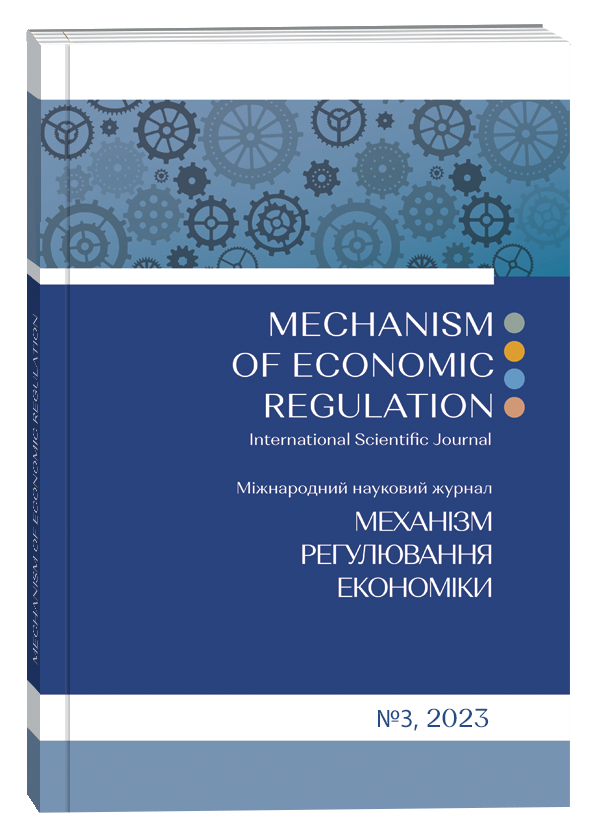ІДЕНТИФІКАЦІЯ ВІДМІННОСТЕЙ КОНЦЕПЦІЙ КЛІЄНТОЦЕНТРИЧНОСТІ ТА КЛІЄНТООРІЄНТОВАНОСТІ
Анотація
В останні роки в бізнес-літературі акцент уваги змістився з клієнторієнтованості на клієнтоцентричність, яка позиціонується як принципова нова концепція, парадигма ведення бізнесу. Метою підготовки даної статті стало прагнення авторів розібратися в співвідношенні даних концепцій для коректного трактування останньої. Проведений огляд наукової літератури за допомогою вбудованої опції аналізу SCOPUS.com показав що основні складові даної концепції (визначення, генезис становлення, передумови, наслідки, відмінності від інших концепцій, позитиви , барєри тощо) були розролені достатньо давно – ще на початку 21 сторіччя . Термін клієнтоцентричність набув застосування не тільки як загальна назва, але і як прикметник (клієнтоцентричний) , який характеризує особливості маркетингу, бізнес-моделі, системи управління, організації тощо. Для підвищення обгрунтованості та зняття упередженості щодо трактування відмітних особливостей концепції був проведений концептуальний комп’ютерний аналіз 2-х масивів інформації: назв та анотацій 270 наукових публікацій , які розміщені в наукометричній базі SCOPUS, з ключовим словом «клієнтоорінтованість» та 460 наукових публікацій з ключовим словом «клієнтоцентричність». Вибірка здійснена з 5856 публікацій в назві або анотації яких використовується один з можливих термінів, що характеризує відношення до клієнта - орієнтація, фокусування, постановка в центрі. Обробка масивів текстової інформація здійснена за допомогою програми WordStat 2023.0.1 - спеціального модулю аналізу тексту, розробленого Provalis Research (Канада). Проведений комп’ютерний аналіз засобами WordStat дозволив встановити: перелік слів та фраз , які найчастіше зустрічаються у науковій періодиці. Виокремлені провідні теми , які розглядаються в межах сформованих вибірок: 6 тем, які характеризують проблемне поле досліджень з клієнтоорієнтованості та 10 провідних тем публікацій з клієнтоцентричності. Отримані неупереджені докази доводять, що якщо на рівні слів має місце тотожність концепцій, то на рівні фраз та топових тем чітко видно перенесення центру уваги з маркетингової проблематики (орієнтація на клієнта, задоволеність клієнтів, відносини з клієнтами , вимоги клієнта; обслуговування, орієнтоване на клієнта, клієнтський досвід, управління відносинами з клієнтами тощо) на менеджерську (бізнесову)- бізнес-модель, процеси, організація, структура управління тощо. Провідними аспектами , які розглядаються в літературі з клієнтоцентричності стають: прийняття клієнтоцентричних рішень в усіх ланках логістичного ланцюгу, проблематика розвитку відповідних інформаційних систем та технологій, створення та використання соціальних мереж, розвиток інструментарію емпатії до клієнта, прогнозування його поведінки. Клієнтоцентричність визнається пріоритетом для розробки продуктів та сервісів в такій новій сфері діяльності як енергозбереження та електроавтомобілі. Таким чином, проведений з використанням програмного продукту WordStat концептуальний комп’ютерний аналіз дозволяє трактувати клієнтоцентричність як якісно новий рівень розвитку концепції клієнтоорієнтованості. Він передбачає поширення сфери дії концепції на усі складові та процеси бізнес-моделі, набуття організаціями нового статусу - «клієнтоцентрична»; визнання клієнта найважливішою, центрально фігурою та рушійної силою розвитку бізнесу.
Посилання
Ranjay, G. (2010). Reorganize for Resilience: Putting Customers at the Center of Your Business Harvard Business Press (January 19, 2010). 288 p.
Gupta, S., & Zeithaml, V. (2006). Customer Metrics and Their Impact on Financial Performance. Marketing Science, 25, 718–739. DOI: https://doi.org/10.1287/mksc.1060.0221
Wealth Management Digitalization changes client advisory more than ever before (2016). Available at: https://www2.deloitte.com/content/dam/Deloitte/de/Documents/WM%20Digitalisierung.pdf-
Mastering Adaptive Customer Engagementshttps. (2014). Available at: https://www.cmocouncil.org/thought-leadership/reports/mastering-adaptive-customer-engagements
The one who is in the centre of the world pays. Available at: https://carway.info/ru/magazine/issue/2020-04/platit-tot-kto-v-centre-mira
Shah, D., Rust, R.T., Parasuraman, A., Staelin, R., & Day, G.S. (2006). The Path to Customer Centricity. Journal of Service Research, 9(2), 113–124. DOI: https://doi.org/10.1177/1094670506294666
Bonacchi, M., & Perego, P. (2011). Improving profitability with customer-centric strategies: the case of a mobile content provider. Strategic Change, 20(7-8), 253–267. DOI: https://doi.org/10.1002/jsc.899
Moormann, J., Palvölgyi, E.Z. (2013). Customer-Centric Business Modeling: Setting a Research Agenda, in: Proceedings of 2013 IEEE International Conference on Business Informatics, Wien. 173–179. DOI: http://doi.ieeecomputersociety.org/10.1109/CBI.2013.33
Habel J., Kassemeier R., Alavi S., Haaf P., Schmitz C. & Wieseke J. (2020). When do customers perceive customer centricity? The role of a firm’s and salespeople’s customer orientation. Journal of Personal Selling & Sales Management, 40(1), 25–42. DOI: https://doi.org/10.1080/08853134.2019.1631174
Greenacre, M. (1993). Correspondence Analysis in Practice. London : Academic Press.
Stephen, T. (1999). Computer-Assisted Concept Analysis of HCR’s First 25 Years. Hum. Commun. Res., 25, 498–513.
Stephen, T. Differentiating the US. regional communication journals: A computer assisted concept analysis. In Proceedings of the Conference of International Communication Association. Washington, DC, USA, (24–28 May 2001).
Illia, L. (2010). How Business Disciplines Discuss Multiple Identities in Organizations. Corp. Reput. Rev., 12, 327–344.
WordStat. Available at: https://provalisresearch.com/products/content-analysis-software/
Péladeau, N., Davoodi, E. Comparison of Latent Dirichlet Modeling and Factor Analysis for Topic Extraction: A Lesson of History. In Proceedings of the 51st Hawaii International Conference on System Sciences, Waikoloa Village, Hawaii, USA, (2–6 January 2018). 615–623.


